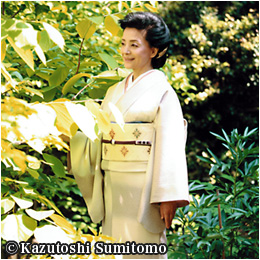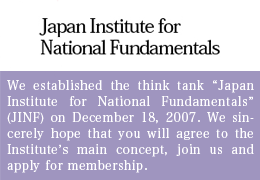Facing a Chaotic World, Reflecting on Centuries-Old Wisdom of Prince Shotoku Would Benefit Japan
I find quite engaging the latest (November) issue of the Seiron monthly magazine—its 40th anniversary issue. Particularly intriguing is the first of a series of new columns by novelist Hideo Osabe, entitled “The Japanese I Have Come to Adore.” Osabe spotlights Prince Shotoku, an early Asuka Period (592-710) regent credited with having established a centralized government in Japan. I fully agree with the thoughts Osabe has on the semi-legendary prince, believed to have died in 622 at age 50.
As America’s political influence wanes steadily, the international community appears headed for a period of increased instability. With this harsh reality of today’s world in mind, I believe the Japanese would be wise to learn from the diplomatic wisdom of Prince Shotoku (572-622), who led Japan successfully with a brilliant vision some 14 centuries ago.
What matters in international politics is national power. Only when a nation has power, is it capable of defending itself, as well as contributing to and influencing other nations. But then where does a nation’s power—or its real strength—derive from? Never can a nation realize its potential without believing in itself and understanding the true source of its strength.
After losing the Pacific War, Japan became a nation whose people idled away their time seemingly in a daze, almost totally disinterested in—and incapable of—reflecting on their circumstances. During the seven-year American occupation which ended in 1952, we Japanese were taught that we had been able to start afresh as a “democratic state” guided by the US. During that period, we became a race dangerously ill-informed about its own history. I am immensely chagrined by the absolute wastefulness of those Japanese who simply mark time without being aware of the wise and peaceful traditions of our civilization.
At the United Nations General Assembly on September 26th, Prime Minister Shinzo Abe pledged that Japan will play a greater role in pursuing an “active pacifism,” vowing the Japanese will “spare no pain to get actively involved in historic challenges facing today’s world.” Abe also noted that it is “extremely regrettable that the Security Council structure is still frozen in a state that reflects the realities of some 70 years ago,” stressing that the Security Council “must be reformed without delay. Japan’s aspiration to become a permanent member of the Council has not changed in the slightest.”
In other words, Abe declared his fervent conviction that Japan’s playing a more important international role will lead to creation of a better world. Put differently, his high spirit indicated his expectation that Japan become a model nation of the 21st century for the international community. What is crucially important is that a Japanese leader has come out strongly to show such a spirit.
That Japan has values proudly demonstrable to the world becomes quite clear if we look back to the seventh century, when Prince Shotoku ruled Japan. One can perceive the essence of the real Japan by understanding Shotoku’s diplomacy and governance. Tracing back the history, one realizes that the values pursued under Prince Shotoku’s 17-article constitution (completed in 604) were revived some 1,260 years later as the Charter Oath (or the Oath in Five Articles) promulgated at the enthronement of Emperor Meiji in 1868 to mark the founding of the Meiji government.
“Wa” (和) for Harmony and “Wa” (倭)for Smallness/ Litheness
That the spirit of the 17-article constitution perfectly matches that of the Charter Oath more than 13 centuries later demonstrates that the values contained in the former long remained the foundation of governance for successive Japanese rulers. On January 1, 1946—78 years after the Meiji Restoration—these values were to come prominently into play for a third time. On that day, speaking under the stringent censorship then in place under the American occupation, the Emperor Showa (Hirohito) read out all of the five clauses of the Charter Oath at the outset of his New Year’s greetings before the Diet.
As for the reason why he had read out all of the clauses of the Charter Oath, Emperor Hirohito remarked, years later, that he had strongly wished to deliver a message to the people of Japan: he wanted to remind them that great post-war values, such as democracy, actually were intrinsically Japanese, as shown by the Charter Oath of Emperor Meiji—although the Japanese people after the defeat were led to believe that all of these sterling Japanese values had been given to them wholesale by foreign nations.
Let us cite some actual examples. For instance, take the famous first article of the 17-article constitution promulgated and written in Chinese by Prince Shotoku: —“‘Wa’ (和) (meaning “harmony”) should be valued and quarrels be avoided…” Author Osabe puts forth an intriguing theory as regards the message of this first sentence if another character also pronounced “wa”—倭 (meaning “smallness and litheness, ” as well as “crooked,” “twisted,” or “short in height” )—were to be used instead of 和 which also means “soft and gentle” or “agree, submit, or reconcile.”
For several centuries until Shotoku’s time, successive Chinese dynasties had referred to Japan as “a country of wa,” using 倭 which was more often than not used in derogatory terms. Japanese intellectuals of those days—the aristocracy, bureaucrats, and priests—were well aware of the dual meaning of what was pronounced as “wa.”
Here, Osabe conjectures that, by changing 倭 to the same-sounding 和— meaning harmony—Prince Shotoku intended to implant a sense of pride, transforming the inferiority complex towards the Chinese on the part of the people to one of “self-respect.”
[Editor’s Note: Ancient Japan had no written language of its own and Chinese was long used as the official written language until the Japanese system of writing was established combining “kanji (Chinese Characters)” with the “kana” Japanese syllabary. ”]
Osabe goes on to point out that Prince Shotoku consolidated various regions that had been divided among different warring local clans into a centralized state, ending a seemingly endless period of strife that had been highlighted by a long and bitter struggle between the two most powerful clans—Soga and Mononobe. A “nation of Wa (和) “that treasured harmony above factions had indeed been created.
The ideal state that Shotoku envisioned was clearly laid out in the 17-article constitution written as a code of behavior for the bureaucrats of that era—the political elites set over ordinary people to run the country. Japan’s first constitution advised the political elites of those days to treasure harmony, learn the teachings of the Buddha as universal values, revere indigenous Shinto gods, shun bribery and slander, settle disputes with strictly righteous judgment, and strive to work harder the higher one’s rank. What is depicted in this document is the coveted state a great nation with honorable moral principles Prince Shotoku had visualized—the character of a generous and gentle nation that takes good care of its people. In point of fact, Osabe describes Shotoku’s constitution as “the declaration of independence for ancient Japan.”
Understanding the Usual Preparations for a Conflict
The five-article Charter Oath, promulgated on the heels of the founding of the Meiji government in 1868, is also surprisingly open, liberal, democratic, and tolerant. Article 1 (“Deliberative assemblies shall be widely established and all matters decided by open discussion.”) and Article 2 (“All classes, high and low, shall be united in vigorously carrying out the administration of affairs of state.”) decree that the ideal state of the nation be discussed by each and every citizen regardless of status or profession and that every effort be made to assemble the best minds to guide the nation.
I believe that, in addition to these values that have been honored in Japan since ancient times, contemporary Japanese might also learn a vital lesson from how adroitly Prince Shotoku dealt strategically with Sui, which unquestionably was Asia’s biggest and menacing power at the time.
It was five years before the army of the second emperor of the Sui dynasty, Emperor Yang (569-618), invaded Koguryo (one of the kingdoms of ancient Korea) that Shotoku sent an emissary named Ono-no Imoko for an audience with the Sui ruler. At a time when Sui’s power spread across Asia, Shotoku dared entrust his emissary with the famous sovereign message specifying that Japan and Sui be on an equal footing with each other. The message starts: “From the sovereign of the Land of the Rising Sun to the sovereign of the Land of the Setting Sun…” Excessive adventurism would have impaired the Japanese national interests then. But Japan at that juncture clearly was running the risk of being almost surely subjugated as a vassal state of China like many other peripheral nations unless it made its position unmistakably clear to the Sui ruler. Osabe points out that thinking Japanese must pay particular attention to the first half of Shotoku’s message to Yang, sent under extremely arduous circumstances.
Shotoku first gave Yang unstinted praise, referring to him as the Bodhisattva Emperor residing in the land off the western seas,” revering him for having importantly contributed to the flourishing of Buddhism across Asia, and expressing a desire to have a delegation of several dozen Japanese priests accompanying his emissary allowed to further study Buddhism in Sui. Prince Shotoku then proceeded with the explicit message, written in bold and magnificent strokes, that Japan and Sui were on equal terms with each other.
Behind this majestic assertion obviously lay Shotoku’s astute expectation that, with Sui getting ready for a war against Koguryo, the usual preparations would naturally call on Sui to win over to its side the Land of the Rising Sun which lay closely behind Koguryo, separated only by a narrow strip of the sea. It can be said that Shotoku’s grand diplomatic strategy functioned as he had anticipated, as he had arrived at the conclusion that Sui could not under any circumstances afford to have Japan as an enemy.
The US and Japan have now entered an era in which both are compelled to face a steadily expanding China. At this time, Japan must clearly implement a strategy of continuing to share common values with the US, expounding its views with confidence, dignity, and self-respect while making sure to honor diplomatic protocol and etiquette in dealing with China.
(Translated from “Renaissance Japan” column no. 577 in the October 10, 2013 issue of The Weekly Shincho)








